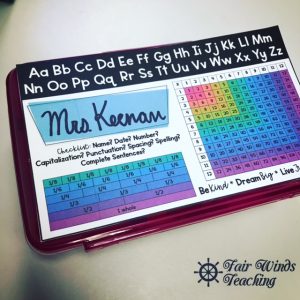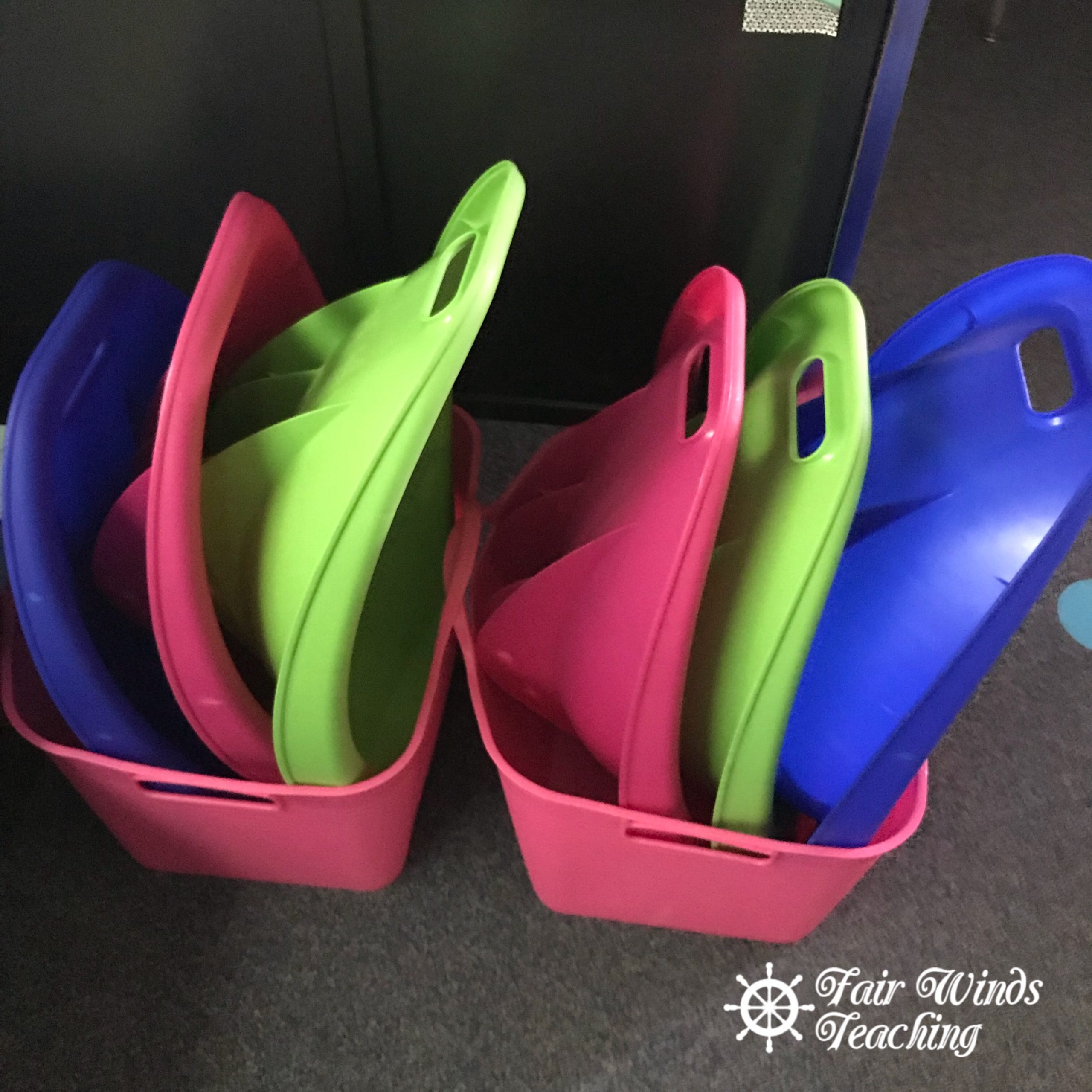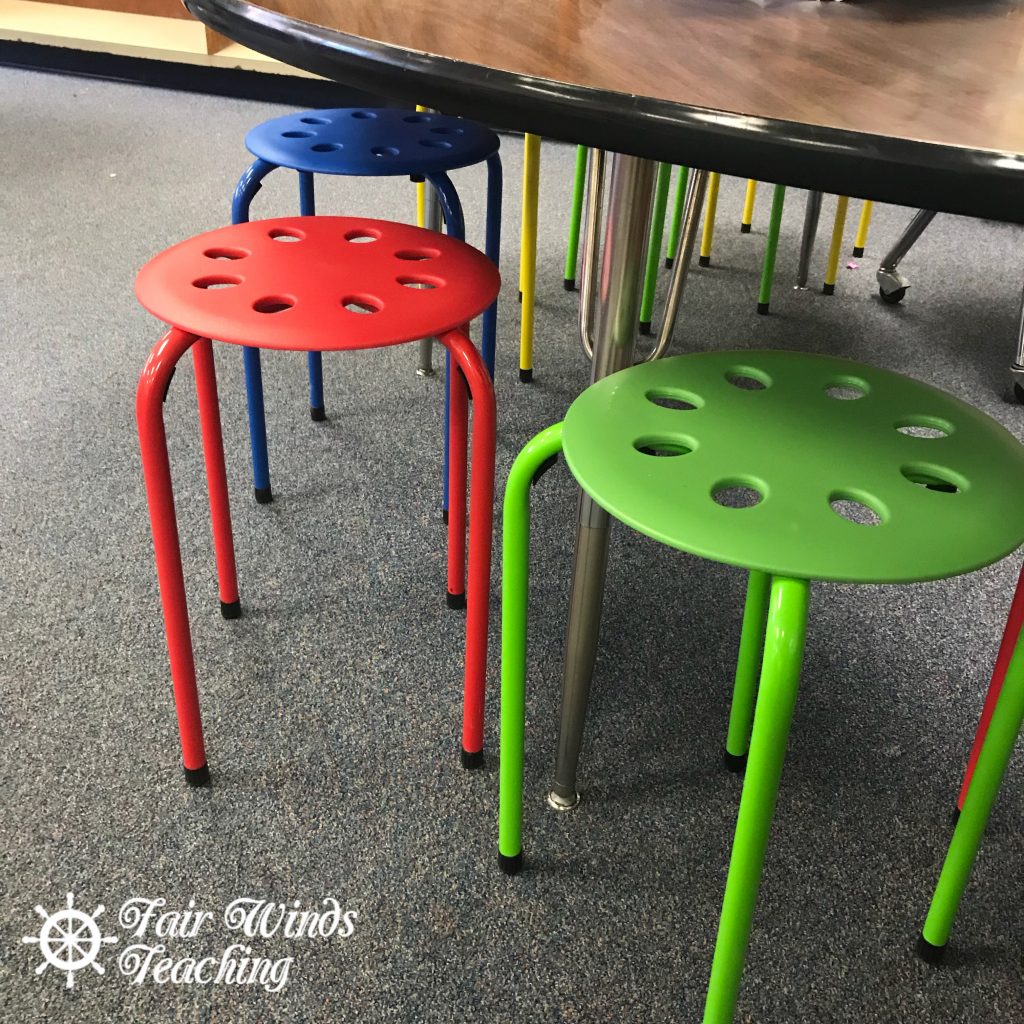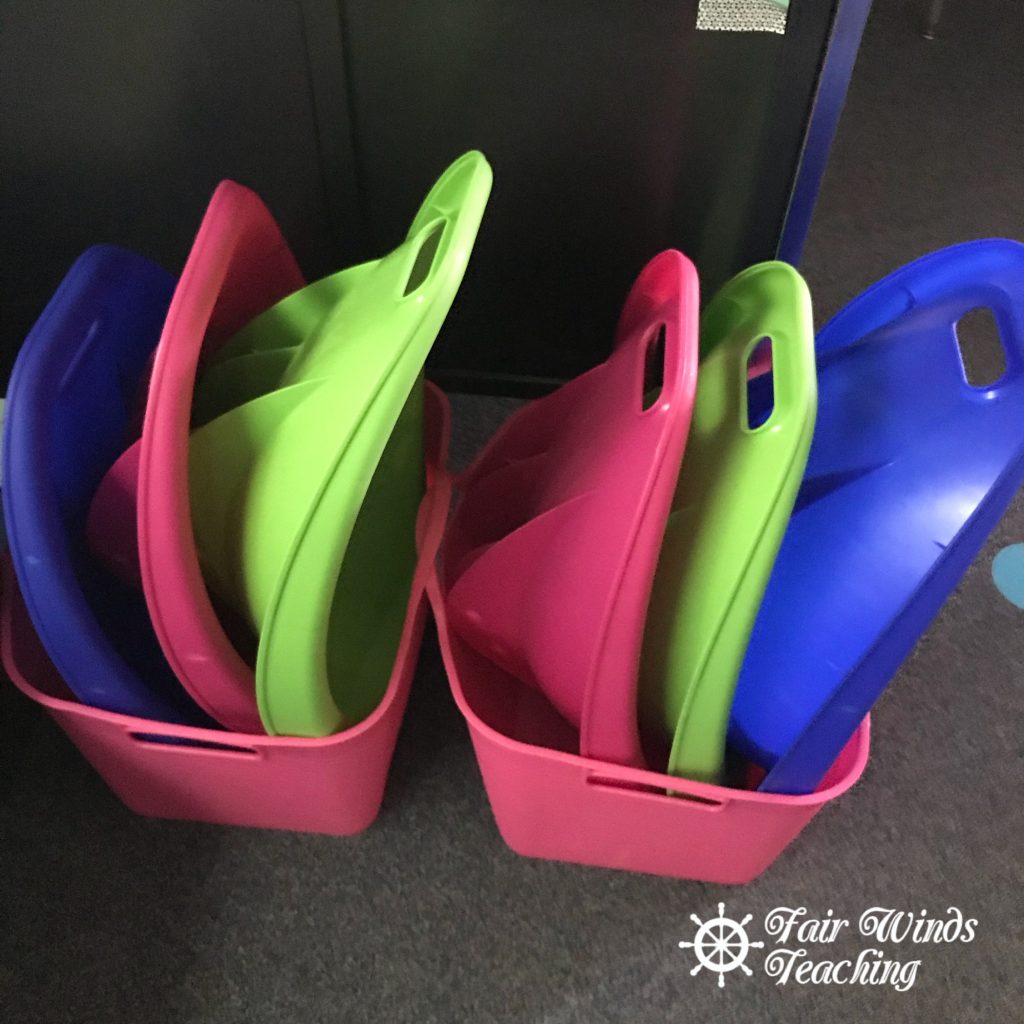The Beginning of my Flexible Seating Journey
As I began using blended learning in my classroom, I knew I needed to work on shifting the mindset of not only myself, but my students as well. In order to have a true blended learning environment, you need to give your students control over the pace, path and place of their lesson. For a student to be truly successful, they should be able to identify in which ways they learn best and advocate for the materials needed to do so. Setting the students up to work at their own pace and giving them choices to decide their path was incorporated into their daily/weekly blended lessons. However, they did not have the opportunity to select where the work was done (their place). This is where changing the mindset of what a “traditional” classroom has looked like over the past few decades took some careful planning.
After much research online and discussions with other educators, I decided that flexible seating could give elementary school students a chance to make a decision about the place they learn best. Flexible seating was only a small part of how I was going to shift the mindset and allow my students to build student agency in their blended learning journey. This journey, of course is all about them. Everything I do in my classroom is to better the students inside of it. Instructional problems change from year to year, and I will adapt what needs to be modified alongside of them.
Shifting the Mindset
When the school year started, I set up my classroom up to maximize the choice the students had in where they could complete assignments. This was a difficult adjustment because of the students being elementary school age. I couldn’t allow them to leave my room to work next door or in the hallway without supervision. I also couldn’t require them to work at home (more of a Flipped classroom model). I have students that do not have access to devices and/or Internet at home. Therefore, I needed to create a space for the students to have autonomy to work inside my room in different areas.
I took out all but 8 traditional desks and chairs and replaced them with different level tables. I thought it was important to keep at least a few traditional options available for students who learn best there. I gathered Stack Stools, Exercise Ball, a small round table with chairs
, Lap Desks
and pillows for the floor
, Bean Bag Chair
, Scoop Rockers
, Wobble Stools
and much more. I wanted to have a standing desk area for students that learn best without a chair and also got low stools and yoga mats for students who like small tables or laying on the ground.
A Look into the Past
I wish I would have had the same opportunity growing up; I would have benefitted from not staying in my chair 100% of the time. I was a very active student and needed to move around while I worked. I did not have that choice and struggled to focus and obtain the best education I could have.
Choice is Student Power
I then wanted to create some ground rules for my blended learning flexible seating model. I wanted to give the students a chance to pick their seat every single day. I had read that a lot of classrooms that used “flexible seating” had the different types of chairs, but didn’t give the students the choice to pick their seat and/or change their minds from day to day. I wanted to give the students full range in where they sat each day and each subject.
 I created a template for their pencil boxes so that they could move around to the seat that best suits them and then mark their spot for others to see. This way, they still had their name tag tools (multiplication chart, alphabet and checklist) and could change their seat as often as they would like. I also established the rule of “two feet,” which I learned at an EdCamp years ago. The students are allowed to get up and move their seat in between lessons/subjects or during independent work time. If a student selected the floor with a lap desk in the beginning of the day for math, they should be allowed to switch to a standing desk or yoga ball in the afternoon. It should be wherever the student will best complete the learning that needs to be done.
I created a template for their pencil boxes so that they could move around to the seat that best suits them and then mark their spot for others to see. This way, they still had their name tag tools (multiplication chart, alphabet and checklist) and could change their seat as often as they would like. I also established the rule of “two feet,” which I learned at an EdCamp years ago. The students are allowed to get up and move their seat in between lessons/subjects or during independent work time. If a student selected the floor with a lap desk in the beginning of the day for math, they should be allowed to switch to a standing desk or yoga ball in the afternoon. It should be wherever the student will best complete the learning that needs to be done.
Changing My Mind
I have changed the room layout a few times throughout the school year to allow for more seating options. Letting go of the fixed mindset of having every student in an assigned seat all the time was a challenge at first, but once I let go of the control, my students proved to me that they can make good choices for themselves. It took some coaching and conversations about what is best for them and how to identify their best learning styles.
Revisiting my expectations for them is important as the school year continued and looking back on the flexible seating contract they signed in the beginning of the year was important. I tell my students all the time to take control of their own learning and using flexible seating is just one small way they can do that.
To grab my Flexible Seating Growing Bundle of Resources, head over to my TeachersPayTeachers store now. It will be updated to include the new flexible seating options I have added throughout the school year.












